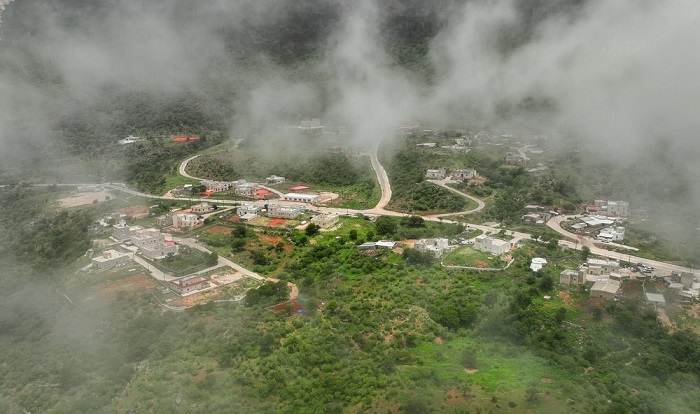
Muscat: The wilayat of Dhalkut welcomes the beginning of Khareef season with drizzle and foggy weather that ends the searing heat and oppressive humidity of summer, leading to an inflow of tourists from inside and outside the Sultanate of Oman.
The Wilayat of Dhalkut, which is located on the coastal strip in the western corner of the Dhofar Governorate, is the first wilayat in which the Khareef season begins, and it is one of the wilayats that is famous for the beauty of its pristine nature and the multitude of its wonderful scenery, where the visitor enjoys the splendour of the place and the picturesque nature it contains.
The Wilayat of Dhalkut includes the Khadrafi area, which is to the north of the wilayat and located 28 kilometers away from it. The fragrant kadi trees grow naturally here, and were found in large numbers in the past but their numbers began to gradually decrease due to overgrazing and the increase in the number of animals.
This rare tree almost became extinct which necessitated intervention to preserve, multiply and spread these trees. The Sultan Qaboos University has contributed to its conservation project in the past through research.
The Wilayat of Dhalkut is distinguished by the diversity of its terrain, the beauty of its nature, and the abundance of fish production.
It produces squids, and various types of fish for which the Dhofar Governorate is famous, in addition to the archaeological sites and inscriptions discovered on the walls of caves, which indicate the cultural and historical depth of the wilayat.
There is an old mosque built about 350 years ago. The state also has many crafts and agricultural products, in addition to its moderate weather throughout the year.
The wilayat is famous for many natural springs descending from the depths of the valleys in Al Qamar Mount, in addition to many natural caves and grottoes that were ancient refuge for humans and animals in the face of weather fluctuations.
On their walls are some archaeological inscriptions, which have now become tourist attractions along with the springs, beaches and green mountains.
There is also a giant and rare tree in the wilayat called the baobab tree, one of the largest trees currently in the Sultanate of Oman, which is popular with tourists. It is a tourist and environmental station for visitors, those interested in the environment, and researchers in plant and wildlife.
images by: Oman News Agency